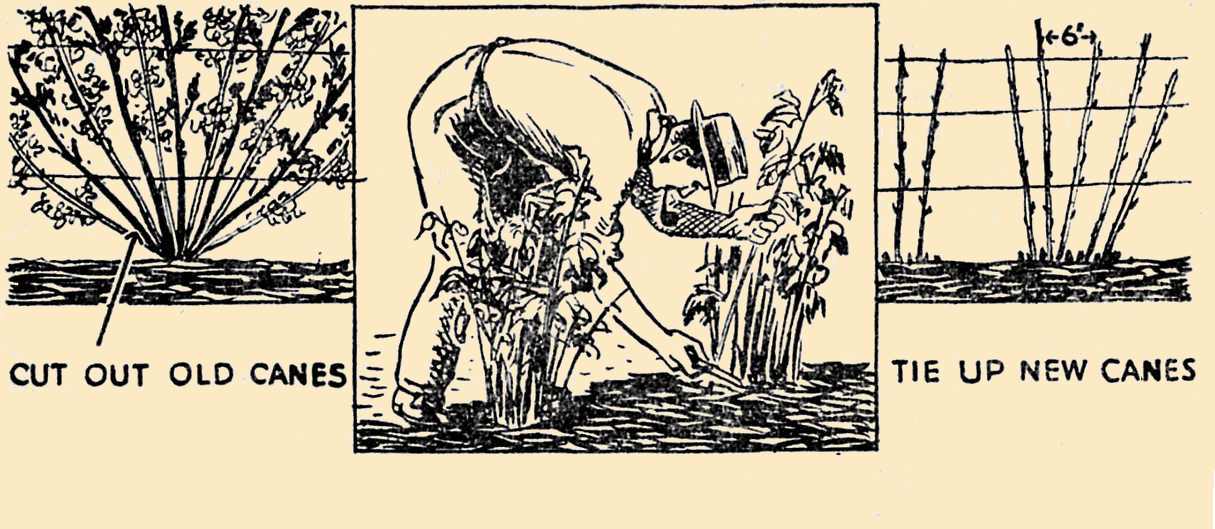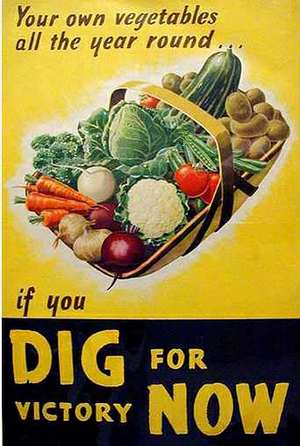FRUIT PAGE
The early varieties of dessert apples will be ready for picking this month—”Beauty of Bath,” “Irish Peach” and “Gladstone.: These must be picked and used as soon as they are ripe or they lose flavour. Not all the fruit ripens at the same time, so it is worth while going over the trees at intervals of a few days.
 There is one right way—and many wrong ways—of picking apples. The sign of ripeness is the case with which the stalk parts company from the twig. Take the base of the apple in the palm of the hand, then raise it until it is horizontal. If it parts easily, it is ripe. If it fails to come away easily, let it gently back to its original place and leave for a few days.
There is one right way—and many wrong ways—of picking apples. The sign of ripeness is the case with which the stalk parts company from the twig. Take the base of the apple in the palm of the hand, then raise it until it is horizontal. If it parts easily, it is ripe. If it fails to come away easily, let it gently back to its original place and leave for a few days.
The great joy about early apple varieties is that, unlike Cox’s Orange Pippin and other late kinds, they do not have to mature after picking, and it is the owner’s pleasure to eat them at once.
Such delights may be especially welcome if, on going over your apple trees, you find that some apples have rotted. This is probably due to Brown Rot, a disease that destroys many tons of apples every year, and also affects plums. pears, quinces and cherries.
Much of this loss can be prevented. The disease starts as a mere spot, where a slight bruise, cut or insect puncture has been invaded by disease spores, carried by wind, rain or insects. The spot gradually spreads into a soft brown patch, and at the same time small swellings under the skin break through as yellowish or buff-coloured growths — or pustules — usually in concentric circles.
These diseased fruits produce a crop of spores, which are carried to other fruits by flies and wasps. And so it goes on—an endless vicious cycle that can only be checked by strict hygiene on the part of growers.
Collect from apple and plum trees and under the trees, all fruit that shows the slightest sign of the disease. Burn it. Go over the trees, especially the soft-wooded varieties of apple such as “Lord Derby” and “James Grieve,” and cut out all dead or dying spurs along with any cankers. Collect and burn. Keep an eye open in the winter for “mummied” fruit left on the trees—gather and burn it.
Special care is necessary when picking apples for storing. Brown Rot is liable to set in wherever there is a wound or bruise, and a favourite place of entry is the slight wound made if the stalk is torn out. So pick with the stalks on.
Do not attempt to store any fruit showing signs of the disuse. It will spread. And clean up under the trees. It is from mummied fruit on the trees and from rotten apples lying about that the first spore invasion usually starts.
Summer fruiting Raspberries should be pruned as soon as the last fruit has been picked. Cut out all the canes that have borne fruit. Cut them right down at ground level. leaving no snags to become resting and breeding places for pests and diseases. Burn all cut-out canes. If your canes are supported by wires, tie up the new canes, 5 or 6 in. apart, with raffia or soft string.
The same sort of treatment should be given to Blackberries and Loganberries. Cut out fruited shoots and thin out weak new growths, and any showing purplish spots (signs of the disease Cane Spot). Keep about 6 or 8 of the strongest shoots and tie them in.



